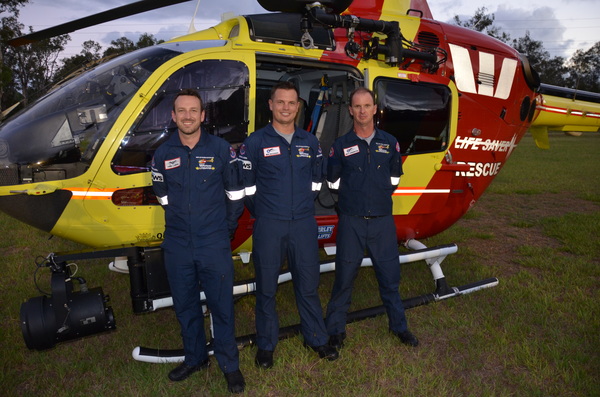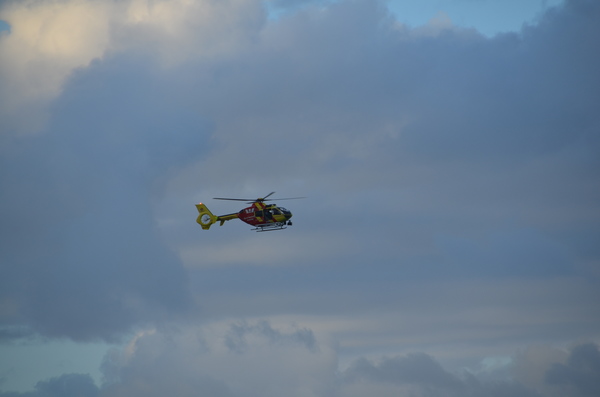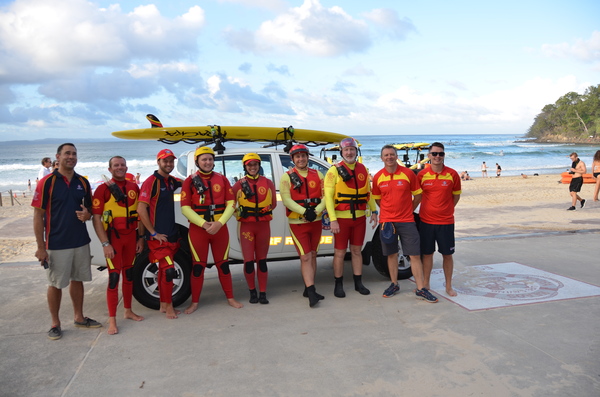By Ron Lane
Last Thursday at 4.15pm at the Noosa club it finally happened.
The team of lifesavers known as the Waverunners, assembled for their long-awaited training session; a joint exercise that would see them combine with the Westpac Rescue Helicopter. There had been other occasions but bad weather had caused last minute cancellations. Finally it was a reality.
A lot of people have asked ‘What are Waverunners?’
They are a group of highly-trained volunteer lifesavers who perform their patrol duties, driving fast high powered jet skis; referred to as the Waverunner.
As Waverunners, they patrol alone and as such need to be experienced in big surf conditions.
For our local team members, they patrol from Wilderness Camp North Shore to Peregian.
The beauty of these craft is their speed, mobility and size.
Their size enables them to manoeuvre into tight situations such as the cliff faces; cliffs such as Noosa’s National Park. They are also capable of a top speed of approximately 90kph and the craft – a Yamaha – is driven by a Waverunner 180 HP engine. All personal are on a 24-hour call out roster.
As such it is not a job for the faint-hearted. An attitude of total dedication is a must day and night, regardless of weather.
To maintain a high level of efficiency, ongoing training is essential.
The combination of helicopter and Waverunner joint exercises in both day and night conditions is a vital part of their training.
Overall command is in the hands of David McLean, Operations Support Coordinator.
David, a veteran of 40 years’ service to lifesaving, was this year awarded the Emergency Services, Emergency Service Medal (Australia) for Distinguish Service; an award well-deserved.
“In our line of work,” David said, “we are happy to say that all clubs are now on board and all our people are prepared to render service that goes ‘above and beyond’ the normal duties of our lifesavers. Also the government and sponsors now realise that with our people being on 24-hour call, that their investment goes a long way.”
After-hour call outs for Noosa come under Night Operations Coordinator Scott Summers of Sunshine Beach club.
Apart from this Scott is also club captain of Sunshine.
“You could say it keeps me very busy; but it is something I enjoy doing,” he said.
The exercise started with a well-structured briefing delivered by Summers in the Noosa club at approximately 4.30pm, after which, gear was assembled and checked.
For the exercise, four jet skis were used – three as trainers and the fourth as the safety vehicle.
The patient for the occasion was a life-sized orange coloured dummy affectionately known as “Bob” and weighing in at 60kg.
Moving to the beach, all drivers took to the water to perform a familiarising run at 5.30pm and returned to the beach to await Westpac.
However for several hundred visitors on Main Beach, this caused some concern as they thought a tragedy was about to unfold, but lifesavers explained it was just a training exercise.
Westpac arrived and twilight training commenced.
At the completion of this section, Westpac then flew inland to the AFL training field, followed by all personal.
Following a debriefing and a meal, it was back to Main Beach where the night training commenced – tracking and locating “Bob” alone – then with the Westpac; via low level searchlight patterns.
At the completion of the debriefing, all were happy with the results; a first of its kind on our coast.
This was a massive step forward in maintaining our high standard of night rescue – and a vital necessity in any coastal tourist resort.








